#iran persepolis
Explore tagged Tumblr posts
Text
Tomb Raider would be Eager for Journey in Iran.

The following article outlines the arcaeological value of Iran.And whether guys would refuse it,or not it's True:Tomb Raider would be Eager for aJourney in Iran.
Below:Our beloved action girl,and archaeologist iss in grand adventures:

Nothing can stop her.It's real wholesome:)

TEHRAN – Deep within the heart of Iran lies the awe-inspiring site of Tang-e Chogan, a captivating testament to the grandeur of the Sassanid Empire (224–651).
Visiting Tang-e Chogan (literary meaning “Chogan gorge”) is an immersive experience, allowing travelers to traverse the corridors of time and witness the grandeur of an ancient empire. The journey to this historical site involves navigating through awe-inspiring landscapes, adding to the allure of the excursion.
The site is located near Bishapur (“Shapur’s City”) of Fars province. As visitors explore the ruins, guided tours, and informational placards offer invaluable context, unraveling the mysteries of the Sassanid era. Additionally, the serene surroundings and picturesque vistas create an ambiance that transports visitors to a bygone era, making Tang-e Chogan an unforgettable destination for history enthusiasts and culture aficionados alike.
Tang-e Chogan is home to six reliefs related to Shapur I and Bahram I and II. There is also a large statue of Shapur I, which is six meters high, located in the Shapur Cave, at a height of about 700 meters from the river bed.
Furthermore, the site embraces larger and more crowded reliefs than any other Sassanid era reliefs, with three of them being more than 30 square meters in size and a body of more than 30 persons in each relief.
The first relief, which is larger and more crowded than any other one, is a scene celebrating Shapur I’s victory over the Roman Empire. Shapur I can be seen in the center of the relief riding on a horse and Gordianus’s corpse is under the feet of Shapur’s horse, Valerian’s hands are held captive in Shapur’s hand and Philip kneels in front of Shapoor’s horse and demands peace. The Persian military and officers are also behind Shapur in five rows of horses and the Roman officers and noblemen are seen in 5 rows carrying gifts and offerings in front of King Shapur I.
The second one represents the victory of King Bahram II over the Arabs. On the left is Bahram on horseback, and the Arabs are led by Iranian commanders to offer the king horses and camels.
The third bas-relief shows the ceremony of the Bahram I receiving a royal ring from Ahura Mazda. The engraving of this amazing relief is very artistic and even the wrinkles and the details of the clothes and so on are all beautifully illustrated. Everything in this relief fits in amazingly well. Even the physical details of the horse and the veins on the horse’s legs have been shown.
The fourth one depicts the scene of the victory of Bahram II over the rebels, in which the king sits on the throne in the center, while on his right side stand the Iranian commanders and soldiers with respect, and the rebels and captivates on the left. They are brought by Iranian soldiers to the presence of the king.
The fifth bas-relief located on the right side of the gorge is the most intact and complete relief among the others. It is about Shapur’s victory over the Roman Empire.
The sixth one depicts the ceremony of Shapur I receiving a royal ring from Ahura Mazda, as well as his victory in the war against the Romans. In this relief, both King and Ahura Mazda (the creator and highest deity of Zoroastrianism) are shown riding on horses and facing each other.
The Sassanid era is of very high importance in the history of Iran. Under the Sassanids, Persian art and architecture experienced a general renaissance. Architecture often took grandiose proportions, such as the palaces at Ctesiphon, Firuzabad, and Sarvestan, which are amongst the highlights of the ensemble.
Crafts such as metalwork and gem engraving grew highly sophisticated, yet scholarship was encouraged by the state. In those years, works from both the East and West were translated into Pahlavi, the language of the Sassanians.
Rock-carved sculptures and bas-reliefs on abrupt limestone cliffs are widely deemed as characteristics and striking relics of Sassanian art, top examples of which can be traced at Bishapur, Naqsh-e Rostam and Naqsh-e Rajab in southern Iran.
In 2018, UNESCO added an ensemble of Sassanian historical cities in southern Iran — titled “Sassanid Archaeological Landscape of Fars Region”-- to its World Heritage list. The ensemble comprises eight archaeological sites situated in three geographical parts of Firuzabad, Bishapur, and Sarvestan. It reflects the optimized utilization of natural topography and bears witness to the influence of Achaemenid and Parthian cultural traditions and Roman art, which later had a significant impact on the architecture and artistic styles of the Islamic era.
The Sassanid archaeological landscape also represents a highly efficient system of land use and strategic utilization of natural topography.
source: https://www.tehrantimes.com/news/493561/Tang-e-Chogan-a-peek-into-enigmatic-legacy-of-Sassanids
#culture#Iran Archaeology#Tomb Raider Lara Croft#Iran#ancient Persia#Iran Fars province#Sassanid Empire#UNESCO#Tang-e Chogan Iran#Iran Persepolis#ایران#ایران باستان#باستان شناسی#نقش برجسته#امپراتوری ساسانی#historical site#مهاجم مقبره#مهاجم مقبره لارا کرافت#Naqsh-e Rostam#نقش رستم#トゥームレイダー#古代ペルシャ#考古学#Iran Tehran#イラン テヘラン#ایران تهران#Tehrantimes
2 notes
·
View notes
Text

Wally Byan's Caravan Around The World makes a stop in Persepolis.
Iran
1964
#vintage camping#campfire light#persepolis#iran#history#airstream#road trips#travel#bas relief#rv life#exploring#1960s
594 notes
·
View notes
Text
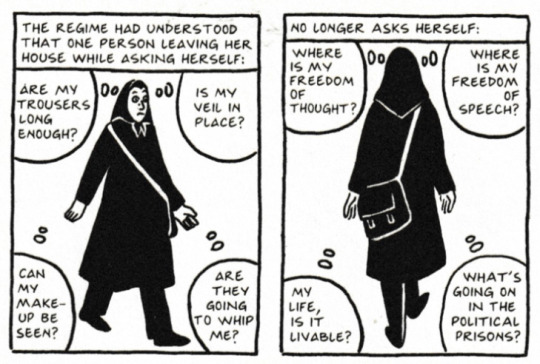
from persepolis 2: the story of a return by marjane satrapi, page 148
597 notes
·
View notes
Text

P e r s e p o l i s
106 notes
·
View notes
Text

401 notes
·
View notes
Text

Ruins of Persepolis - Iran, circa 1923 / [***]
31 notes
·
View notes
Video
tumblr
Persepolis Directors: Marjane Satrapi & Vincent Paronnaud France/Iran, 2007
#Persepolis#Marjane Satrapi#Animation#Iran#Iranian Revolution#Islam#Women#War#Black and White#Fundamentalism#Iran–Iraq War#Muslim
432 notes
·
View notes
Text
Dovetail joints in Achaemenid Palaces

Dovetail joints have been used in woodworking for thousands of years. About 2,500 years ago in ancient Iran (Persia) they were also used in the construction of Achaemenid palaces (such as Persepolis, Susa or Bardak Siah Palace in Bushehr province in the south of Iran). (550 to 330 BC). They were used to connect different stone parts of the structures.
Photo Source

Joining two pieces of stone with a dovetail joint at Persepolis.
This method has also been used in Urartu, Median, Egyptian, and Greek civilizations.
33 notes
·
View notes
Text

Persepolis (2007) 🖤
#Persepolis#Iran#punks not dead#hijabi#muslimah#graphic novel#2007#marjan marwani#illustration#feminism#punk
41 notes
·
View notes
Text
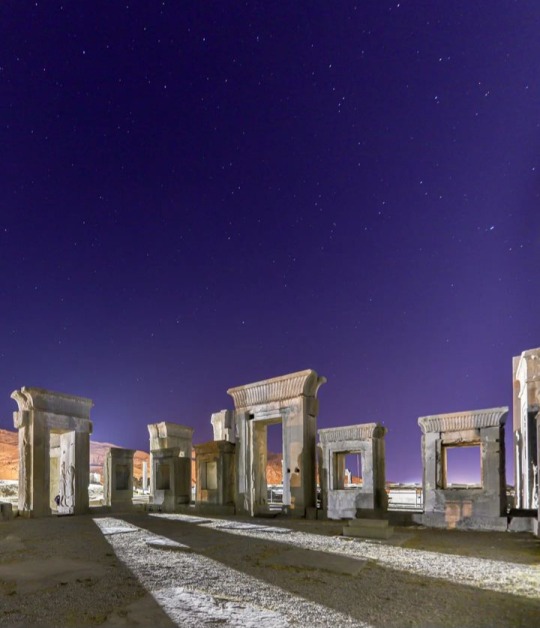

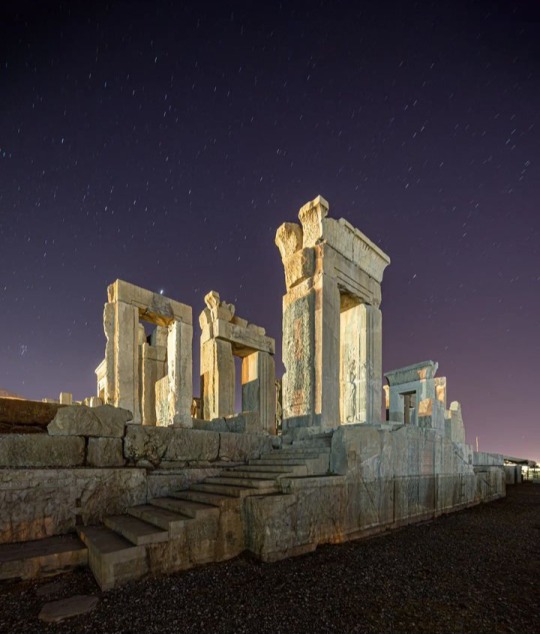
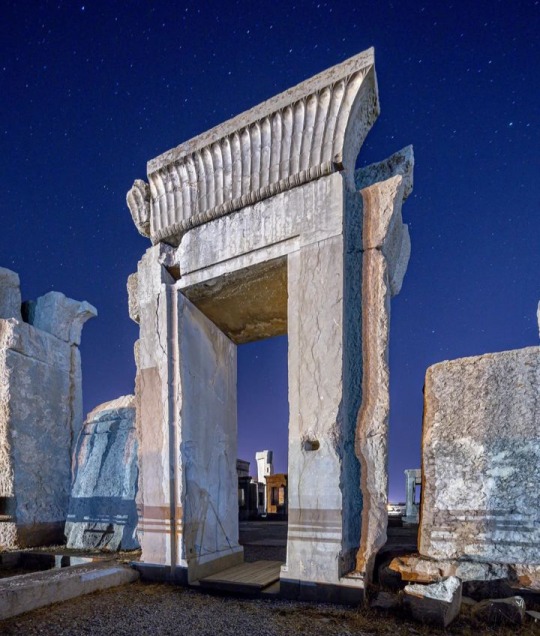
Persepolis/ Fars/ Iran
Photography: Amirhossein murmoieni
#iran#middle east#persian#iranian#persia#farsi#culture#art#travel#architecture#persepolis#perspolis#fars#shiraz#persian architecture#persian art#nightsky
122 notes
·
View notes
Text
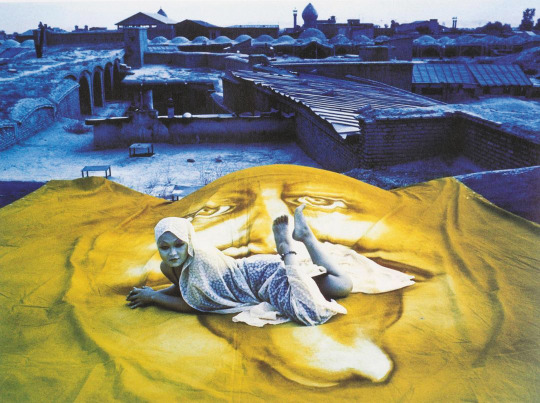
Tenjo Sajiki Sitting On a Piece of Set Decoration from The 'Ship of Fools' play Shiraz, Persepolis Art Festival in Iran Photography By: Shuji Terayama (1976)
#behind the scenes#tenjo sajiki#ship of fools#play#persepolis#film#festival#iran#japan#photography#shuji terayama#1976#shuji terayama archive
297 notes
·
View notes
Text
Mysteries Of Iran Still Undeciphered

TEHRAN - Iranian filmmaker Pejman Mazaheripur, whose new documentary on Persepolis was screened at the Cinema Museum of Iran on Sunday evening, says the majestic UNESCO-registered site still harbors numerous unrevealed mysteries.
Addressing the attendees during the screening of his film, Mazaheripur expressed his belief that despite extensive research and numerous documentaries about Persepolis, there remain untold stories and unexplored facets waiting for researchers and filmmakers to delve into.
“This documentary is part of the Ancient Iran series, initiated in 1396 (2017) and meticulously researched and compiled until 1400 (2021),” Mazaheripur said at the start of his presentation.
“Under the supervision of Dr. Shahrokh Razmjou, the documentary underwent rigorous research phases. The initial film covered the early explorations [conducted at Persepolis] up until World War II, with the second film focusing on the significance of Ali Sami, the first Iranian archaeologist who commenced excavations at the foundation of Persepolis.”
Mazaheripur also mentioned the Italian conservation efforts that led to the identification and preservation of various artifacts, now housed in the National Museum of Iran. “The third film encompasses Razmjou's studies on specific structures within Persepolis… along with an analysis of the intricate details on the eastern side of the Apadana Palace.”
Regarding the challenges faced during the documentary's production, Mazaheripur highlighted the abundance of pre-existing films focusing on Persepolis' Achaemenid era, emphasizing the rarity of productions dedicated to archaeological and historical analysis.
"I firmly believe that Persepolis still holds undisclosed secrets, leaving ample space for researchers and filmmakers," Mazaheripur stated.
Referring to his recent documentary, Mazaheripur said: “We intended to uncover it based on in-depth research. Editing consumed most of our time due to the details stemming from our comprehensive studies.”
Reflecting on personal experiences during the documentary's production, Mazaheripur remarked on the challenge of accessing historical visual documents from various sources but expressed satisfaction with the culmination of their efforts.
Also known as Takht-e Jamshid, Persepolis ranks among the archaeological sites that have no equivalent, considering its unique architecture, urban planning, construction technology, and art.

Majestic approaches, monumental stairways, throne and reception rooms, and dependencies have made that 13-ha ensemble one of the world’s greatest archaeological sites.
Construction of its immense terrace was begun about 518 BC by Darius the Great, the Achaemenid Empire’s king. On this terrace, successive kings erected a series of architecturally stunning palatial buildings, among them the massive Apadana palace and the Throne Hall (“Hundred-Column Hall”).
The terrace is a grandiose architectural creation, with its double flight of access stairs, walls covered by sculpted friezes at various levels, monumental gateways, gigantic sculpted winged bulls, and remains of large halls.
By carefully engineering lighter roofs and using wooden lintels, the Achaemenid architects were able to use a minimal number of astonishingly slender columns to support open-area roofs. Columns were topped with elaborate capitals; typical was the double-bull capital where, resting on double volutes, the forequarters of two kneeling bulls, placed back-to-back, extended their coupled necks and their twin heads directly under the intersections of the beams of the ceiling.
"Narratives say that Persepolis was burnt by Alexander the Great in 330 BC apparently as revenge against the Persians, because it seems the Persian King Xerxes had burnt the Greek City of Athens around 150 years earlier". Actually Alexander the Great burnt the Palace of Xerxes,it were the Arab Conquerors who burnt down the city.

Source:https://www.tehrantimes.com/news/493172/Persepolis-still-harbors-numerous-mysteries-documentarist-says
#Iran Persepolis#ancient#Culture#archaelogy#Takht-e Jamshid#Cinema Museum of Iran#Film Museum of Iran#ancient Persia#ایران#ایران باستان#Achaemenid Empire#امپراطوری هخامنشی#مرودشت#Marvdasht Iran#archaelogical mysteries#اسرار باستان شناسی#داریوش کبیر#تخت جمشید
2 notes
·
View notes
Text

Gate of All Nations The Gate of Xerxes -UNESCO World Heritage (r. 486 – 465 BC) Persepolis - IRAN
The bronze trumpets that once signaled the arrival of important foreign delegations to Persepolis, the ceremonial capital of the mighty Achaemenid Empire, may now be silent, but it is still possible to capture the sense of awe while visiting the colossal Gate of Xerxes.
Built during the reign of Achaemenid king Xerxes I , who called this his Gate of All Nations, the pillared entrance is guarded by bearded and hoofed mythical figures in the style of Assyrian gate-guards.
On arrival at Persepolis one is confronted by an imposing wall, completely smooth and plain, about 15 meters tall: this is the artificial terrace on which the palaces were built. This vast terrace of Persepolis, some 450 meters long and 300 meters wide, was originally fortified on three sides by a tall wall. The only access was from the monumental staircase, which leads to the Gate of All Nations.
The gateway bears a cuneiform inscription in Old Persian, Neo-Babylonian, and Elamite languages declaring, among other things, that Xerxes is responsible for the construction of this and many beautiful wonders in Persia. Centuries of graffitists have also left their mark, including explorer Henry Morton Stanley.
A pair of colossal bulls guarded the western entrance; two man-bulls stood at the eastern doorway. Engraved above each of the four colossi is a trilingual inscription attesting to Xerxes having built and completed the gate. The doorway on the south, opening toward the Apadana, is the widest of the three.
According to sources, pivoting devices found on the inner corners of all the doors indicate that they must have had two-leaved doors, which were probably made of wood and covered with sheets of ornamented metal.
Persepolis, also known as Takht-e Jamshid, whose magnificent ruins rest at the foot of Kuh-e Rahmat ("Mountain of Mercy"), was the ceremonial capital of the Achaemenid Empire. It is situated 60 kilometers northeast of the city of Shiraz in Fars Province.
Persepolis was the seat of the government of the Achaemenid Empire, though it was designed primarily to be a showplace and spectacular center for the receptions and festivals of the kings and their empire.
The royal city ranks among the archaeological sites which have no equivalent, considering its unique architecture, urban planning, construction technology, and art.
The city was burnt by Alexander in 330 BC apparently as revenge to the Persians
The immense terrace of Persepolis was begun about 518 BC by Darius the Great, the Achaemenid Empire’s king. On this terrace, successive kings erected a series of architecturally stunning palatial buildings, among them the massive Apadana palace and the Throne Hall (“Hundred-Column Hall”).
This 13-ha ensemble of majestic approaches, monumental stairways, throne rooms (Apadana), reception rooms, and dependencies is classified among the world’s greatest archaeological sites.
#art#design#doorway#architecture#heavensdoorways#gateway#entryway#iran#persepolis#bull#royal#royal city#style#history#gates of xerses#unesco world heritage#monumental#gate of all nations#achaemenid#persia#xerxes#front door#architrave
84 notes
·
View notes
Text






holo sticker pack inspired by objects and motifs found throughout iran's history 🦁 available here
#stickers#stationery#lion#pomegranate#iran#persia#persian#persepolis#ancient history#ancient near east#rhyton#store stuff
11 notes
·
View notes
Text

P E R S E P O L I S
209 notes
·
View notes
Text
Don't forget the reason the U.S. is supporting Israel's genocide of Palestine - hell, 90% of the reason they ever get involved into something in the Middle East is for ulterior purposes regarding oil.


That and the Ben Gurion Canal project, which you can learn more about:
Also this short video explaining the canal's significance and full history in summary:
Simply put,
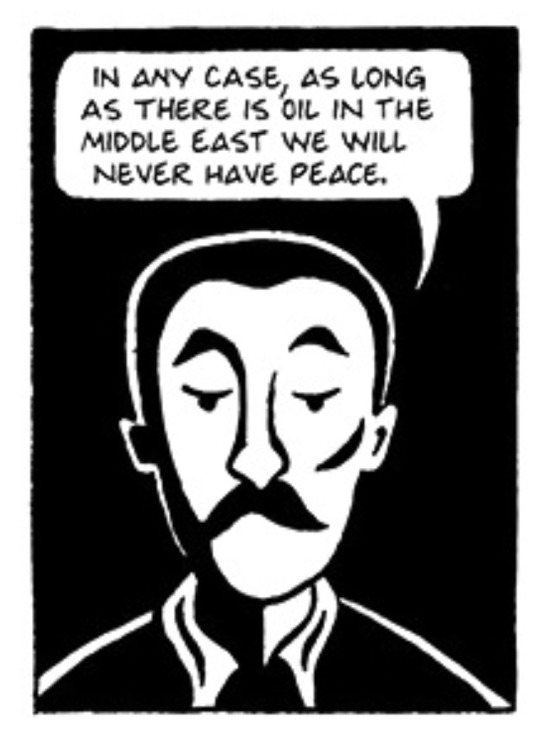
#free palestine#israel is a genocidal state#israel is a terrorist state#fuck america#fuck israel#comic pic is from persepolis btw#which is an autobiography of the author growing up in iran during the iranian revolution#not to mention how the US destabilized iran bc their democratically elected leader was gonna nationalize its oil for iran#and they put someone who would play ball for them in charge#its always about the oil#EVEN IN THE MIDST OF EVERYONE GOING “THE FUTURE ISNT VIABLE W FOSSIL FUELS”#WE SHOULD BE LOOKING FORWARD FOR USING AND TRANSITIONING TO RENEWABLE ENERGY SOURCES#BUT THE CAPITALISTIC FUCKS WANT MONEY NOW#AT THE EXPENSE OF HUMAN LIVES#THE LIVES OF ARABS AND BROWN PPL INDIGENOUS TO PALESTINE NOTE THAT#aaaaaaand of course the canal#much easier than dealing w egypt#for both israel and america#israel will be onboard w them and they'll have a way of strengthening their grip on the middle east and world economy#this is honestly disgusting and terrifying#egypt#suez canal
65 notes
·
View notes